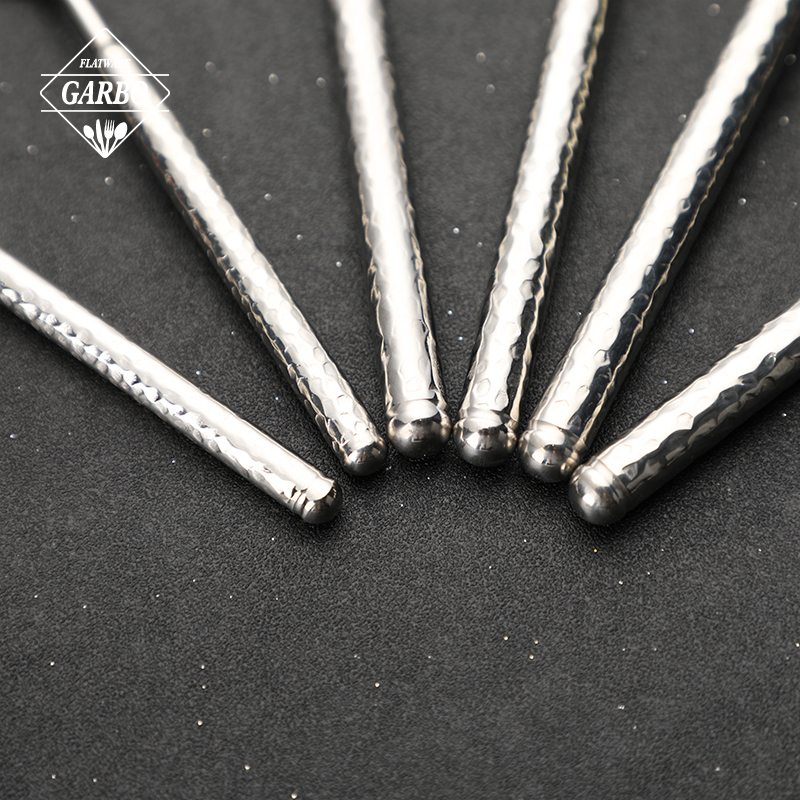Pulished on Nov. 21, 2025
In recent years, many customers have often wondered why 201 stainless steel products are cheaper than 304 stainless steel when purchasing stainless steel cookware such as cutlery, thermos flasks, and stainless steel bowls and plates.
Visually, it's difficult to distinguish the different materials, and their functions are also quite similar.
As a professional stainless steel tableware manufacturer and wholesaler, this article will clearly compare them from the following aspects to help you choose the right stainless steel cookware for your daily purchases.
Firstly, the root cause lies in their different chemical compositions. In the stainless steel industry, 304 stainless steel contains 18% chromium and 8% nickel (this is the well-known 18/8 stainless steel).
This material forms an extremely dense and stable "passivation film" through the high chromium and high nickel content, firmly adhering to the surface and effectively preventing corrosion. 201 stainless steel,.
On the other hand, contains 16%-18% chromium, 3.5%-5.5% nickel, and 5.5%-7.5% manganese. The passivation film formed by chromium and manganese is not stable or dense enough and is easily damaged in harsh environments.
Furthermore, it is relatively cheaper. 304 stainless steel uses more expensive and high-performance nickel, while 201 stainless steel partially replaces nickel with cheaper manganese and nitrogen to reduce costs. This is the fundamental reason for the price difference between the two.
Secondly, and most importantly, is corrosion resistance. 304 stainless steel has extremely strong resistance to common kitchen substances (such as vinegar, lemon juice, soy sauce, and salt water) and is not prone to rusting even with long-term use.
It is an internationally recognized safety standard for kitchenware and food contact materials. Conversely, 201 stainless steel has weaker corrosion resistance. In humid, salty, or acidic environments .
Such as prolonged contact with dishwasher detergent, seaside environments, or failure to clean acidic foods promptly after storage), it is prone to pitting and rust spots. You might see brown rust spots on the edges of some inexpensive tableware or between the tines of knives and forks.

Furthermore, 304 stainless steel is more stable and less susceptible to corrosion from weak acids in food, making it extremely difficult for heavy metal ions to leach out, thus ensuring food safety. 201 stainless steel.
Due to its poor corrosion resistance, poses a risk of manganese and other metal ions leaching out after prolonged contact with acidic substances. While products meeting basic national standards have manageable risks, their safety level is significantly lower than that of 304 stainless steel.
Moreover, 304 stainless steel has a brighter white color, better texture, better ductility, and is easier to process into various complex shapes.
However, 201 stainless steel has a relatively darker color, with a slightly grayish-white tint. Because it contains manganese, it is relatively harder and more brittle.
Last but not least, how do you quickly distinguish between 304 and 201?
First of all, the most effective method is a chemical test. "Stainless steel testing solution" is available commercially. Add a drop, wait a few minutes, and observe the color change. The solution identifies the material by reacting chemically with the manganese (Mn) and nickel (Ni) in the material.
Therefore, if the material being tested is 304 stainless steel, the solution's color will remain largely unchanged or change very slowly (pale red). If it's 201 stainless steel, the solution will quickly turn a deep brownish-red.
In addition, magnetic testing is an important auxiliary testing method. A magnet can be used to attract the materials. 304 stainless steel is usually non-magnetic or weakly magnetic. 201 stainless steel, on the other hand, usually exhibits significant magnetism due to its manganese content.
If you are unable to distinguish between 201 and 304 stainless steel during the purchase process, please feel free to contact us.